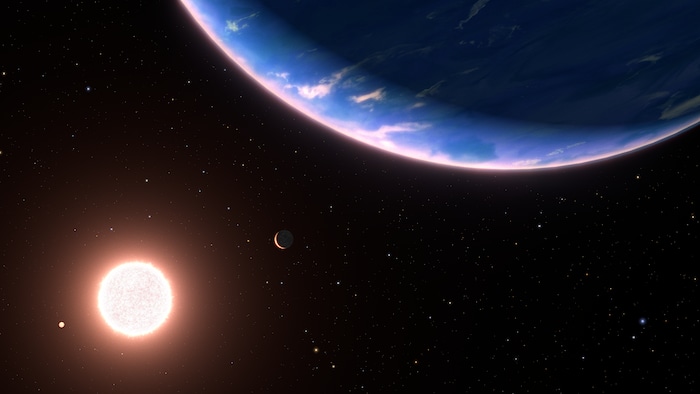Open in full screen mode The exoplanet GJ 9827d. (Artistic illustration) Agence France-Presse The smallest known planet outside the solar system to contain water in its atmosphere has been observed by Canadian and European astronomers using data collected by the Hubble telescope. Water on such a small planet is a landmark discovery, said Laura Kreidberg of the Max Planck Institute for Astronomy in Germany, co-director of the research. This brings us closer than ever to describing truly Earth-like worlds. The planet in question, GJ 9827d, whose diameter is approximately two times that of Earth, is located in the constellation Pisces, 97 light years away, or more than 900,000 billion kilometers, according to a press release from NASA and ESA. These officials believe the planet is either a mini-Neptune – with a hydrogen-rich, water-laden atmosphere – or a hotter version of Jupiter's moon Europa, which contains twice as much Earth. water than the Earth under its crust. GJ 9827d could be half water and half rock, explained Björn Benneke of the Trottier Institute for Exoplanet Research (iREx), associated with the University of Montreal, who co-led researches. There would be a lot of water vapor on smaller piles of rocks. Loading ELSE ON INFO: Quebec will continue to offer rapid and paid training in construction Until now, we have not been able to directly detect the atmosphere of such a small planet. And we're getting there gradually. A quote from Björn Benneke, iREx For three years, Hubble was able to analyze the wavelength of colors in the atmosphere of GJ 9827d, when the light from the planet star around which it rotates filters through its atmosphere, and detects the presence of water molecules. Even if this planet has an atmosphere rich in water, its temperature of 425 ° C makes it uninhabitable. This discovery, however, opens the way to other studies of GJ 9827d and of similar planets, including using the James Webb Space Telescope, which can use its high-resolution infrared images to search for other atmospheric molecules like carbon dioxide and methane. The details of this discovery are published in the Astrophysical Journal Letters (New window) (in English) .
Quebec will continue to offer rapid and paid training in construction
Water vapor in the atmosphere of a small exoplanet

